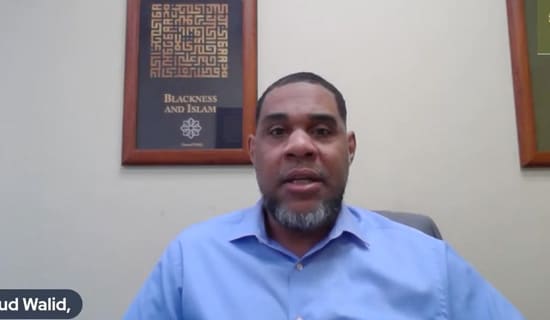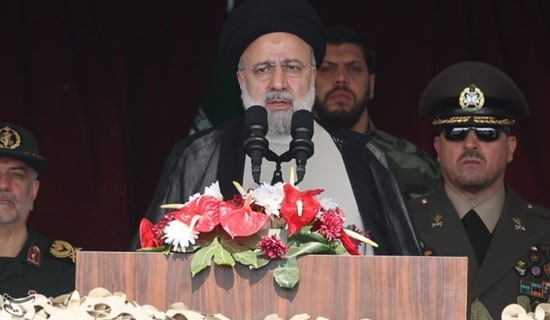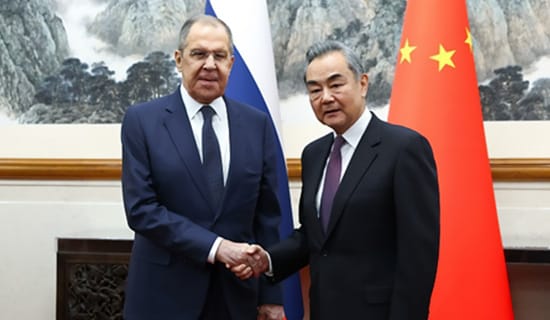
Tourists are returning to Kashmir's world-famous Dal Lake
Introduction
There are indications that the two-decade old jihadist movement against India in Jammu & Kashmir state is entering its last days. A decline in the militancy in Kashmir had begun after the 9/11 attacks, following which the jihadist-minded terrorist organizations everywhere lost legitimacy, including in Kashmir. The erstwhile princely state of Jammu & Kashmir is divided by a Line of Control (LoC) between Pakistan and India, with the Pakistan-controlled Kashmir known as Azad (Free) Jammu & Kashmir (AJK).
The pro-independence militancy in Indian Kashmir had begun predominantly with two Pakistani-backed objectives: to liberate Kashmir from India as well as to align the state as part of Pakistan. Those seeking an independent Kashmir – notably Amanullah Khan, the leader of Jammu & Kashmir Liberation Front (JKFL) – were marginalized over the years.
These jihadist groups in Kashmir were propped up in India's Jammu & Kashmir state by the Pakistani military's Inter-Services Intelligence (ISI) following the end of the Cold War, which was marked by the withdrawal of Soviet troops from Afghanistan in 1989 and emboldened the ISI to achieve a similar feat against India in Kashmir. During the two decades of militancy, more than 40,000 people, mostly civilians, were killed in shootouts by Indian security forces, grenade and bomb attacks by militants, crossfires and custodial death, according to official Indian government figures.[1]
From various Indian media reports, one can observe signs of positive developments in Kashmir valley as explained below.
Tourism Highest in 25 Years: 1.1 Million Tourists Visited Kashmir Valley Up to September 2011
With militant attacks significantly down, Jammu and Kashmir – known as paradise on earth in popular imagination – is attracting tourists again. The number of tourists this year has reached more than a million, the largest figure during the two decades of militancy. According to an Indian media report:[2]
"It is a golden autumn in the 'paradise on earth.' With tourists coming back to the valley since early spring, Kashmir and its people are brimming with joy. Strife-torn Kashmir has transformed into a tourism hotspot with the highest number of tourists in 25 years.
"Around 11 lakh [1.1 million] tourists have visited the valley till September. For a state crippled by terrorism and militancy, the revival of tourism raises the aspirations for thousands of people. The civilian unrest had taken a toll on this tourist haven.
"Ghulam Hassan Bhat, a Shikara [boat] owner, in the world famous Dal Lake [of capital Srinagar] has been rowing his boat from spring to autumn, yet he shows no signs of tiredness. His smile tells a story of satisfaction and a handsome earning after a long drought of tourist inflow…
"The tourist destinations were abuzz with activity since early March making everyone dependent on tourism – Shikara owners, house boat owners and hoteliers – optimistic on future prospects…
"Kashmir's winter tourism has been picking up over the past few years… Autumn sees the transformation of the valley into a mini-Bengal as hordes of tourists from [eastern Indian state of] West Bengal would descend on the valley.
"Bengali tourists are all over the place as it used to be during the pre-1990 period. 'Our efforts bore fruit and my hope is more tourists will visit the Valley in coming days. We have fully revived the industry which provides direct employment to nearly 18 percent of Kashmir's population,' Farooq Ahmad Shah, Tourism Director said."
Report: 50 Percent Decline in Militancy in Kashmir
In late-June 2011, S. M. Sahai, the Inspector General of Police (IGP) of Jammu & Kashmir, noted that there has been a 50 percent decline in militant attacks in the state over the previous year.
Speaking to reporters, Sahai noted: "We have witnessed a 50 percent decline in militancy in the valley but the enemies of peace, who don't want people to live in peace, are still alive… There has been considerable improvement in the law and order situation in Kashmir during the current year and we are trying hard to maintain peace in cooperation with the public."[3]
This trend in declining militancy has been sustained this year. In mid-October 2011, Kuldeep Khoda, the state's Director General of Police (DGP), reiterated that the militancy in Jammu & Kashmir has come down by 50 percent, but he also cautioned against any complacency on the part of the police force.
Khoda stated: "We have been able to successfully control militancy this year. There is a 50 percent decrease in militancy this year as compared to the last… As compared to the last year, more self-styled commanders of different terror outfits have been neutralized."[4]
Decline in militancy does not mean that militants from Pakistani Kashmir are not making attempts to cross the Line of Control (LoC) into Indian Kashmir. The DGP noted: "There have been more infiltration attempts this year. These have been neutralized by security forces very effectively."[5] He also cautioned that some "listed militants" – i.e. those whose identities are known to the security forces – are still operating in Jammu & Kashmir.[6]
In August 2009, Indian Army officials claimed that about 600-800 militants were operating in Jammu & Kashmir.[7] Lieutenant General P. C. Bhardwaj, the General Officer Commanding-in-Chief of the Northern Command of the Indian Army, said: "Overall assessment from all [Indian security] agencies put their number at around 600 to 800. Among them, the number of foreign mercenaries could be lower."[8]
Report: "Foreign Militants’ Presence has Come Down to 134, While the Local Militants Represent 168 out of 325 Active Militants; The Real Security Threat Lies in 23 Unidentified Militants"
From Indian media reports, it emerges that now Indian security officials can almost count the names of militant commanders on one hand. In June 2011, the Hindustan Times newspaper published a report based on a situation review prepared by the security agencies, noting:[9]
SUPPORT OUR WORK

"From the usual militant hubs like south Kashmir’s Kulgam area, there are fewer militants there than perceived in peaceful areas like Ganderbal, where around 16 militants are active, with seven local boys and four suspected to be outsiders. Kulgam area has only 13 militants.
"Another quirky revelation is that [the state capital of] Srinagar has more militants than Shopian district, which once was a militancy hotbed. There are 14 militants active in Srinagar… and only 13 in Shopian…
"Police sources said that there is a strategic shift in north Kashmir, which has the highest concentration of militants, numbered at 200. As security forces are tightening their grip in north Kashmir areas like Sopore, Kupwara and Handwara, the militants are shifting to Bandipora and Ganderbal, north-east of Srinagar.
"In contrast to north Kashmir, south Kashmir’s areas of Anantnag, Kulgam, Pulwama and Shopian have only 85 militants. The new picture drawn up by security agencies shows the HM [Hizbul Mujahideen] taking over from the LeT [Lashkar-e-Taiba], which became a potent militant force in Kashmir from 1998 until the 11/26 attack in Mumbai [in 2008]. 'The HM figures stand at 143 while the LeT rank strength has shrunk to a mere 92,' according to the survey. But the LeT remains No. 2 in the militancy graph.
"Similarly, foreign militants’ presence has come down to 134, while the local militants represent 168 out of 325 active militants. The real security threat lies in 23 unidentified militants active in Kashmir…"
Indian Website: Militant Group Hizbul Mujahideen is "Slowly Fading Away"
During the two decades of militancy, several Pakistan-backed militant organizations were active against Indian security forces. The key militant organizations included Hizbul Mujahideen (HM) led by Pakistan-based jihadist commander Syed Salahuddin and Lashkar-e-Taiba, among others.
Another key armed group fighting for an independent Kashmir from India was the Jammu & Kashmir Liberation Front (JKLF), but it was marginalized over the years by Pakistani intelligence for two reasons: it was a secular Kashmiri movement and it did not agree to Kashmir's incorporation into Pakistan.
A report on the website of The Times of India newspaper recently indicated that Hizbul Mujahideen, the biggest of the indigenous terrorist organizations in Kashmir controlled from Pakistan, has been almost wiped out. The report observed:[10]
"Once the most formidable face of Kashmir militancy, Hizbul Mujahideen is slowly fading away as its remaining commanders and cadres are being taken out on a regular basis by security forces.
"According to estimates available here, there are hardly more than two dozen active militants left in HM, the biggest indigenous militant group ever in Kashmir. Even the remaining militants have not resorted to any major action in months now. 'They are basically reduced to throwing occasional grenades or random firing, even those are very rare,' a senior official said on the plight of HM.
"Over the… [first few weeks of October 2011], security forces eliminated or arrested many of the remaining HM operatives in the Valley. On October 13, Kashmir Valley's longest serving militant and one of the senior-most HM members, Mushtaq Killer AKA Mustaq Janghi, was killed. In the same operation, another militant was killed and a third was arrested.
"A few days prior to the operation, security forces had arrested Mohammad Shafi, also known as Dr. Dawood, believed to be the head of operations of HM in the troubled state. He, along with former operational chief Abdul Majid Dar who was killed in 2003, and HM's Pakistan-based chief Syed Salahuddin, were among the early members of HM who played a critical role in shaping the militancy that has raged for the past quarter century.
"Started by Jamaat-e-Islami members who revolted against the 1987 rigged elections and other oppressive policies, HM grew into the dominant militancy group by the early 1990s, with almost full membership comprising of local Kashmiris. Though they had foreign hands, HM's dominant presence as a militant group of locals gave the Kashmir insurgency a completely local flavor and some amount of global justification…
"Long-time observers of Kashmir within the establishment point out that the slow death of HM is a sign of the disenchantment of the local population towards violence. But if New Delhi fails to seize the political space available to make lasting peace, a new kind of violence, more deadly and foreign cannot be ruled out…"
Jammu and Kashmir Chief Minister: Tough Anti-Terror Laws to Be Revoked
Indian security forces' operations in Jammu & Kashmir as well as in some north-eastern states of India are covered by tough anti-terror laws such as the Armed Forces Special Powers Act (AFSPA), the Disturbed Areas Act (DAA) and the Public Safety Act (PSA). These laws have been criticized over the past decade by human rights groups for giving virtually unlimited powers to the security forces to detain terror suspects or enter their homes.
However, with the militancy in Kashmir in decline now, Omar Abdullah, the elected Chief Minister of Jammu & Kashmir, has indicated that the laws will be removed soon. Addressing a police meeting on October 21, 2011, Abdullah said, "With the gradual improvement in the security situation and return of peace, some laws (AFSPA and DAA) are being removed from some areas of the state within the next few days…"[11]
Although it is not entirely clear if the federal government will agree to Abdullah's proposal to remove AFSPA and DAA from the Srinagar and Budgam districts in Kashmir Valley and from the Udhampur and Jammu districts, his statement is an indication of positive developments being noticed in the state.
Indian Army Commander Lt.-Gen. Syed Atta Hasnain has said that no decision has been taken to revoke AFSPA.
Hardline Kashmiri Leader Offers to Hold Dialogue with India

Syed Ali Shah Geelani, a former Jamaat-e-Islami leader, is a leading hardline leader of the Kashmiri movement known for his pro-jihad viewpoint. Geelani, who always campaigned for liberating Kashmir from India and incorporating it as part of Pakistan, has in an unprecedented development indicated that he is willing to hold talks on the Kashmir issue with the federal Indian government.
Geelani, who shunned a team of three interlocutors appointed by the Indian government last year to hold talks with the Kashmiri organizations, is the head of the hardline faction of the All Parties Hurriyat Conference (APHC-Geelani), a coalition of Kashmiri groups.
According to an October 18, 2011 report on the website of The Times of India newspaper, "Syed Ali Shah Geelani has surprisingly come to express his willingness to hold talks with the Centre [i.e. the federal Indian government] over Kashmir issue. The hardliner separatist … [said] that he would seek the consent of his colleagues… if the Centre extended an offer for talks…"[12]
According to the report, Geelani said that as a condition of talks India should first accept his four demands: acknowledgement of Kashmir as an international dispute, demilitarization of Jammu and Kashmir, revocation of laws like AFSPA, the Public Safety Act, etc., release of political prisoners, and prosecution of Indian security forces responsible for the killing of over 100 people last summer when they turned out in the streets of Kashmir organizing Intifada-like protests.[13]
Except for demilitarization and declaring Kashmir as an international dispute, the Indian government would not mind meeting the rest of the demands put forward by Geelani. His willingness to hold talks with the Indian government comes amid indications that India is about to announce a policy of dialogue with Kashmiri organizations.
Geelani's move for talks with the Indian government was immediately opposed by Syed Salahuddin, the Pakistan-based commander of Hizbul Mujahideen and chairman of the United Jihad Council, a coalition of the Pakistani jihadist organizations. According to a report, Geelani rebuffed Syed Salahuddin, stating: "We take our own decisions here and dictations [from Pakistan-based groups] are not taken by us… The talks offered in that case will be discussed in the advisory council of [the APHC-Geelani]."[14]
* Tufail Ahmad is Director of MEMRI's South Asia Studies Project (www.memri.org/sasp).
[1] www.hindustantimes.com (India), July 18, 2008.
[2] www.rediff.com (India), October 18, 2011.
[3] www.greaterkashmir.com (Indian Kashmir), June 30, 2011.
[4] www.timesofindia.com (India), October 17, 2011.
[5] www.timesofindia.com (India), October 17, 2011.
[6] www.timesofindia.com (India), October 17, 2011.
[7] www.hindustantimes.com (India), August 26, 2009.
[8] www.hindustantimes.com (India), August 26, 2009.
[9] www.hindustantimes.com (India), June 8, 2011.
[10] www.timesofindia.com (India), October 19, 2011.
[11] www.timesofindia.com (India), October 21, 2011.
[12] www.timesofindia.com (India), October 18, 2011.
[13] www.timesofindia.com (India), October 18, 2011.
[14] www.timesofindia.com (India), October 20, 2011.




